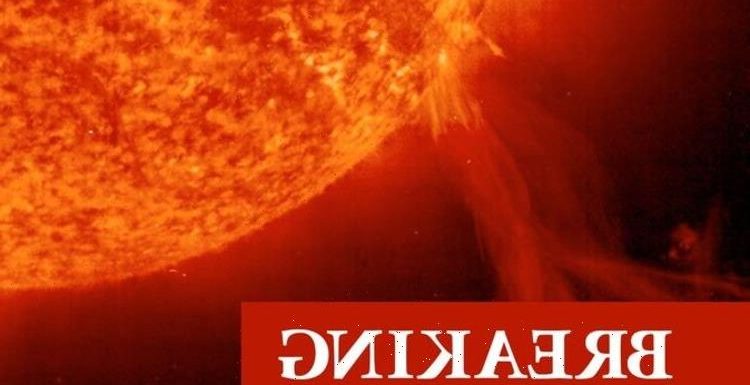
SpaceX satellite explodes during solar storm
We use your sign-up to provide content in ways you’ve consented to and to improve our understanding of you. This may include adverts from us and 3rd parties based on our understanding. You can unsubscribe at any time. More info
The storm is expected to hit Earth sometime on Monday, March 28. A solar storm is a disturbance in particles thrown out by the electromagnetic eruptions of the sun.
NASA predicts that the solar storm will arrive around midnight GMT on Monday.
However, the US National Oceanic and Atmospheric Administration (NOAA) believes it will hit eighteen hours beforehand, at around 6am.
When solar winds hit Earth’s magnetic field, the interaction of which causes the atmosphere to fluoresce.
This is known as the aurora lights, or the Northern Lights in the northern hemisphere.

Dr Tamitha Skov – known as the “space weather woman” for her online celestial forecasts – predicts reception and high-frequency radio issues on whichever side of the Earth is in the day time when the solar storm hits.
She added that the NOAA prediction “indicates a faster solar storm that will hit harder”.
Dr Skov said that the effects “could reach the mid-latitudes” of the planet’s surface.
Asked where skywatchers may be able to see the aurora caused by the storm, she suggested that people in rural New York may be able to spot them, but someone as far south as Utah might not.

New York sits below the UK, so there is a chance eagle-eyed Britons will be able to spot the lights.
In the southern hemisphere, Dr Skov said those in southern New Zealand and Tasmania may be able to see the aurora “as long as it is dark enough” and the storm hits during the evening there.
However, those living in Australian cities such as Victoria and Perth may not be so lucky.
This is because the solar particles that hit earth during a storm “are deflected towards the poles” by the Earth’s magnetic sphere.
Billy Teets, an astronomer at Vanderbilt Univesity in Tenessee, explained that the deposits of energy this creates cause the atmosphere to fluoresce around the poles.
More to follow…
Source: Read Full Article